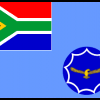-
Posts
261 -
Joined
-
Last visited
Profile Information
-
Gender
Male
-
Location
UK
Recent Profile Visitors
1,499 profile views
Mark12's Achievements

Established Member (3/9)
201
Reputation
-
The Griffon engine has a single unit combined magneto sitting between the cam covers at the front. They modified or developed the magneto to a much lower profile in the course of time. The Coffman starter was installed on the RHS of the engine below the exhaust stacks..
-
I started to collect a Mk XII kit together some years back. Starting with a dedicated Mk XII firewall frame five with data plate, auxiliary gearbox pick up points and short Griffon engine mount lugs I grafted on a A-A Mk V/IX fuselage kit. The lower carry through spars are Mk V with the four equal diameter bolts. Mk VIII wings will not fit due to the increased width of the spar booms and the increased diameter of the two inner bolts on the lower spar and boom. I selected a pair of Mk IX wings although Mk V would have serviced the requirement. For these wings I gathered a Mk Vc Trop radiator set. The Trop main radiator is correct and one inch deeper than the temperate Mk V. Oleos are from Mk V or early Mk IX…the spline type. Wheels & Brakes are late Mk V four spoke. Beggars cannot be choosers and a Mk IX tail unit is fitted although strictly speaking it should not have the extended horn on the elevator. Rudder is pointed Mk VIII/IX/XVI type and is correct. Engine and bearer assembly are from a Seafire XVII and the four blade propeller from a Seafire XV…a perfect fit. Top cowling will be a cut down Mk XIV item with a dummy bulge between the cam cover profiles to simulate the clearance on the early magneto. Fuel and oil tanks will be Seafire XVII which is a bit of a compromise. All cockpit furniture, front windscreen and canopy are late Mk V/IX. A bit of fun, scale 1:1, Serial number EN224, Code EB-L, Registration G-FXII. Could be flying by next year with a following wind. Happy new year. .
-
"Spitfire Mk.IXc Question" Answer. There is no such thing as a Mk.IXc. Just Mk.IX... and then 'early Mk.IX' & MK.IXe with the introduction of the .5 Browning. .
-
I would be inclined to check that out a little further. PeterA The film contains historically significant footage that would otherwise have been lost to posterity: Film footage of the Supermarine S.4 in taking off from Southampton Water, and in flight, now available nowhere else.[citation needed] Footage of many real-life Battle of Britain fighter pilots in the opening and closing scenes. RAF fighter pilots such as Tony Bartley and Brian Kingcombe (with pipe) have cameo roles in the scenes at the dispersal, and are seen discussing their flights with David Niven before take off and after landing. Film footage of Jeffrey Quill flying a Spitfire Mk II in the final scenes of the film. Jeffrey Quill's log book records that the aerobatic flying sequences featured in the last 20 minutes of the film were made by him from Northolt on 1–2 November 1941, in a Spitfire Mk II, flying for one hour, five minutes on 1 November and for 45 minutes on 2 November 1941. The workers seen building the Spitfire, near the end of the film. These are the real workers, filmed at the Hamble Supermarine Factory, one being Wilfred Hillier (wearing spectacles), working on the only left handed lathe, imported from Germany.
-
...but with the Grace/Melton low deck conversion at a scale of 1/24th preferred, where would I start? Accuracy and detail would need to be paramount but the cost of the support parts/kits etc would not need to be too much of an issue. PeterA
-
An original print in my collection. L1066 & P9566 PeterA
- 19 replies
-
- 10
-

-
Mk XII and XIV Spitfires have aluminium datum upper longerons. Seafire 46 / Spitfire 22 have stainless steel datum upper longerons All Spitfires have aluminium lower longerons, latterly reinforced locally with stainless steel doublers at high stress points as more power was introduced. PeterA
-
Bob, I concur. Images of my own EN224 (4th production Mk XII) show the prop tip profile typical of an aluminium blade whereas this shot from the famous 41 Squadron photo-shoot, all MB serials, shows a profile typical of the Mk IX wooden blades with brass leading edge sheath as per the second shot of a blade from MK923, currently sitting on my desk. The previous owner had exposed the sheath, that is of course usually painted over. PeterA
-
I used the wooden blades and hub from a Seafire Mk XV on my XII project. The hub, bearings and metal parts are carry over Mk IX Looking at photographs of Mk XII's on the ground, and there aren't that many, the rounded profile of the prop tip would suggest to me the the prop blades may have been made of aluminium. PeterA .
-
The early main fuel tank was in simple terms two flat ends with a single curvature wrap. The later and larger main fuel tank was achieved by constructing it out of welded pressings that could explore every available space in the tank bay to gain precious volume. This was assisted by a redesign on the non structural aluminium diaphragm that separates the fuel tank from the pilot below the datum longeron. On the Mk VIII it was time to sort out the streamline of the semi armoured top fuel tank cover which was an early modification to Mk I's sitting on or proud of the external lofting line. The Mk VIII utilised a new flush fitting top tank cover that physically held the top fuel tank in position when fully screwed/locked down as opposed to the four 'pit-pins' on the earlier marks. Mk VIII..a stronger fuselage? In what respect? Torsional stiffness? Bending moment? The firewall carry through spar area was 'beefed' up. The wonderful engineering thing about the Spitfire was its ability for the design to be continuously modified by gauge changes, doublers in high stress areas, transitions from upgraded aluminium through to stainless steel as the loadings increased. Somewhere in the AP for the Mk VIII will be a diagram of the various gauges of skin material used for comparison with the Mk V. I do not have a copy. PeterA
-
The new and unique Mk XII Spitfire fuselage was designed to mate with the basic Mk Vc wing. The new Mk VIII Spitfire fuselage was designed to mate with the new and awaited stronger Mk VIII wing. The new Mk XIV Spitfire fuselage was also designed to fit the stronger wing. The Mk XII Spitfire is on the same branch of the family tree as the MK Vc. The Mks VIII and XIV Spitfires are on another branch. PeterA
-
Spitfire family tree here:- http://www.strijdbewijs.nl/birds/spitfire/spitfiretree/spittree.htm The first Mk XII's was built in December 1942 some six months before Mk VIII production where there were many technical delays ...due in part to the new wing. PeterA
-
Read the words on the diagram. The Mk XII has a strengthened Mk Vc fuselage. The fuselages are not interchangeable, the very visible differences being the engine mount forgings and the firewall bracketry for the auxiliary gear box for the Griffon. PeterA
-
'Spitfire the History' would not normally be my first port of call on technical matters. Certainly, this is the official notification of the major changes to the Mk Vc up to the Mk XII Note on my own MK XII EN224 that the four bolts on the lower spar are all the same diameter as Mk V and the parallel Mk IX. On Mk VIII's with the stronger new wing the two centre bolts on the lower spar are of significantly increased diameter. Also the fuselage spars are set wide by two times 16SWG to accommodate the reinforced Spar booms on the wing. PeterA
-
You can define a Mk.VIII in a number of different ways: a Mk.XII given a Mk.IX engine with modified fuel system and ailerons; Just an unpressurised Mk.VII; The Mk XII EN serials were certainly based on the Mk V fuselage and wing. It is possible the MB serials were different and for sure the retracting tail wheel may be an indicator. PeterA




(510x640)-Copy(95x120).thumb.jpg.33073138e01aa81779639a845926753e.jpg)


